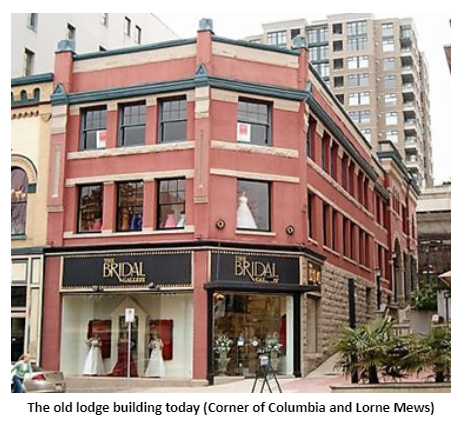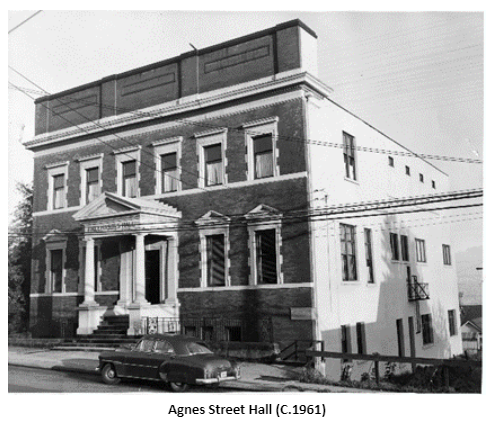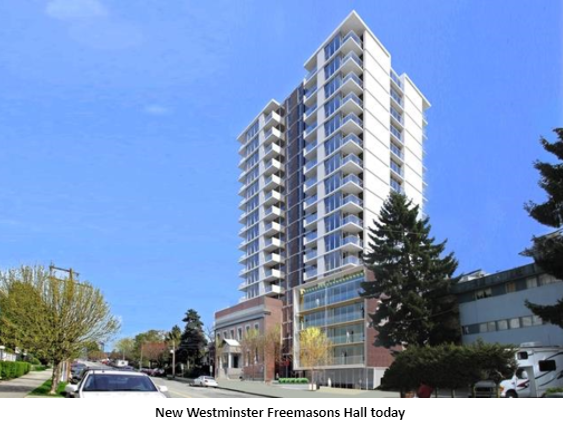
- Details
- prev
- next
- Share
- Get directions
- prev
- next
About the Lodge
A long road of setbacks and triumphs
The building you are standing in front of presently is the most current manifestation of Freemasonry in New Westminster. To get to this point, two previous buildings were destroyed by fire in the years 1891 and 1898. Each rebuild brought us closer to what you see today. Freemasonry consists of Lodges. Not only Lodges of brick and mortar but groups of men. In 1860, men who had come to New Westminster from Europe and the USA following the new Gold Rush, petitioned the Grand Master of England for a warrant to create a Lodge here. In 1861, Union Lodge No. 1201 (ER) was formed, becoming the first Lodge of Freemasons in what was to become the Province of British Columbia 10 years later. This was 10 years before the formation of the Grand Lodge of BC & Yukon and so was originally on the English Registry under the United Grand Lodge of England.
Over 100 years of Fellowship and Fraternity
The modern structure you see in front of you still has the facade, and the soul, of the third building built by local Freemasons. The original 1911 building has been used and enjoyed for over 100 years and has now taken on this modern form. Freemasonry in New Westminster has a long and storied past and so does this building. Perhaps in another 100 years, someone else will be standing here learning about the history of this great building and the people who gave it its soul. You can learn more about the multiple Lodges and concordant bodies that meet here and even some controversy in their role in the formation of the Grand Lodge of BC further down the page.
Location
508 Agnes Street, New Westminster, British Columbia V3L 1G1, Canada
Province
Lodges that meet here
Blue Mountain Lodge No. 182
Blue Mountain Lodge No. 182 originally met at DeWolfe Lodge Hall at 2660 Shaughnessy Street in Port Coquitlam. Blue Mountain began its journey in 1968. After much planning, intrigue and debate, our first meeting was on November 5, 1974. Our sponsoring lodge (Mother Lodge) was Burnaby Lodge No. 150.
Blue Mountain was given dispensation on April 15, 1975, and fully constituted one year later on September 18, 1976, by the Grand Master Most Worshipful Brother Alex Mitchell. Fifty-one Charter Members signed our Charter. Our first and Founding Worshipful Master was Right Worshipful Brother Don Emo.
The name Blue Mountain was chosen from the area in Coquitlam that was halfway between the initial location in DeWolfe and the Mother Lodge location. Blue Mountain Lodge is a fully operative Lodge using the “Canadian Ritual” and now finds its home in the brand new Masonic Lodge facility, here at 508 Agnes Street, New Westminster.
We meet the first and third Tuesdays of the month with Business meetings on the first meeting and Emergent Meetings to perform the ceremonies of the Three Degrees on the second night.
Well known for excellent ritual work, exciting and thought provoking educational sessions, and a great contributor to many of the appendant bodies in Freemasonry, Blue Mountain Lodge has produced six Potentates for the Gizeh Shrine in British Columbia.
Duke of Connaught Lodge No. 64
Duke of Connaught Lodge No. 64 originally met at the Masonic Lodge Hall at 1142 Lonsdale Avenue in North Vancouver. Following the tragic destruction of that building by fire on March 30, 2021, our Lodge now meets at the Lodge Hall at 508 Agnes Street, New Westminster. We are grateful to the New Westminster Freemasons Hall for inviting us to relocate to this building.
From our original Minute Book, Duke of Connaught Lodge No. 64 was instituted by the Grand Master at an Emergent Communication held on the north shore of Burrard Inlet, at North Vancouver, on November 28, 1911, when he also dedicated the Masonic Hall. Grand Lodge ordered the charter to Duke of Connaught Lodge at the Annual Communication on June 20, 1912.
The Founding Master of Duke of Connaught Lodge was Luther Watts Doney, (1865 – 1926). Born in England, he moved to China as a young man where he joined Freemasonry. Our Founder was also a founding member of Anglo-Colonial Lodge 3175 in London, England. He moved to North Vancouver in 1910, where, he served as Police Magistrate, joined Burrard Lodge No. 50 in North Vancouver, and founded Duke of Connaught Lodge in 1912.
The Lodge is named after HRH Prince Arthur, Duke of Connaught and Strathearn, Grand Master of the United Grand Lodge of England from 1901 to 1939 and Governor General of Canada from 1911 to 1916. Prince Arthur was an outstanding human being who espoused the equality of man in times and places before it was readily accepted by the rest of society. As a military commander, the Duke held the common soldier in his heart and did his utmost to improve their plight. His efforts led to the abolition of flogging in the Army.
The Duke took his first Indian command at the end of 1883. As with most of his overseas assignments, the Duke made an effort to learn the local language, albeit to a basic communication level. By all accounts, the Duke saw mankind as equal in the eyes of God and treated them accordingly – again much ahead of his time.
He served his country with distinction, and our country, as the Queen’s representative. We could all do well to emulate his quality and character.
Meeting on the first Wednesday of the month, except for July and August, the Lodge works what is termed the Canadian Work embellished by extracts from the revised English ritual.
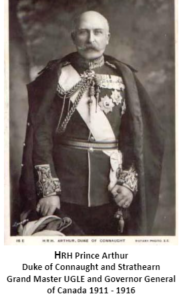
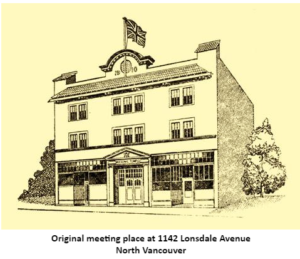
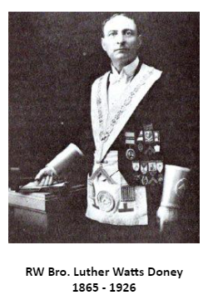
Grandview - Trinity Lodge No. 96
Grandview Lodge No.96 and Trinity Lodge No.98 amalgamated on April 16, 2015. The ceremony of consecration and Constitution was performed by the Most Worshipful Grand Master, Philip Durell and Grand Lodge Officers, and the Grand Lodge officers installed the Elected Officers of Grandview - Trinity Lodge.
In April 2014, Worshipful Master Michael Shaul of Trinity Lodge No.98 and Worshipful Master Danilo Puno of Grandview Lodge No.96 proposed the consolidation of the two Lodges. Subsequently after several meetings, both Lodges, with Worshipful Brother Shaul of Trinity Lodge and Right W.orshipful Brother Dwight Coull of Grandview Lodge residing in the East, balloted on the Notice of Motion. Both lodges voted unanimously in favour of the amalgamation to be named Grandview - Trinity Lodge No.96 Ancient Free and Accepted Masons, B.C. & Yukon Registry.
In December 1997, Grandview Lodge No.96 and Unity Lodge No.106 Consolidated to form one Lodge under the name of Grandview Lodge No.96.
On February 19, 1921, Most Worshipful Brother Martin Grimmet granted dispensation to Grandview Lodge to meet as a Lodge of Freemasons at Grandview in the City of Vancouver. Worshipful Brother William Ross was appointed Worshipful Master. The Lodge was instituted by Right Worshipful Brother W.J. Campbell, District Deputy Grand Master, and Grand Lodge Officers on March 3, 1921. The Grand Lodge of B.C. granted Grandview a Lodge Warrant at their Annual General Meeting in Prince Rupert on June 22, 1922.
On March 20, 1921, Trinity Lodge No.98 was formed by Worshipful Brother John Sargison. The Lodge was Instituted by Right Worshipful Brother John Clemons Deputy District Grand Master and Grand Lodge Officers on August 3, 1921. The Grand Lodge of B.C. granted Trinity Lodge a Lodge Warrant at their Annual General Meeting in Prince Rupert on June 22, 1922.
Grandview - Trinity Lodge donates over $12,500 annually to 12 local charities in B.C. We also provide Educational Bursaries to eligible children of our Members.
Grandview - Trinity Lodge meets every 2nd and 4th Tuesday, each month, except July and August.
Lewis Lodge No. 57
Lewis Lodge No. 57 on the Register of the Grand Lodge of British Columbia and Yukon was constituted on August 8, 1910, after being granted a dispensation and instituted in 1909. There were several reasons why the necessity arose to establish a third Lodge in New Westminster in the early 20th century. The city was rapidly growing and existing Lodges were becoming overcrowded. Also, the existing Lodges conducted their ceremonies in “Ancient” or "American" work. As a result, many of the newly arriving residents from eastern Canada wanted a Masonic ritual that they were familiar with and Lewis Lodge came into being.
Over the decades, Lewis Lodge has always maintained a strong hold on the Grand Lodge of British Columbia, with seven Grand Masters coming from its ranks, these being Most Worshipful Brothers Thomas J. Armstrong, Alexander Charleson, John Stilwell Clute, Richard E. Walker, who were charter members of the Lodge as well as George L. Cassady, John H. N. Morgan, James Herbert Nordan and most recently, Donald E. Stutt.
Lewis Lodge No. 57's current membership is quite varied with its Brethren having a broad range in age, background, religion, profession, hobbies and aptitudes. Our Brethren are proud of the strong fellowship that we have for each other, our robust educational offerings, the quality of our Masonic ceremony and the hospitality that we show our visitors. We enjoy having and sharing in rewarding Masonic experiences; from raucous laughter to thoughtful reflection. Aside from our formal meetings, we have strong Lodge traditions, including hosting an annual Robbie Burns Night in January, a Lodge barbecue in the summer and a holiday party in December for members, their spouses and partners.
Our Meetings are held in New Westminster BC, Canada, in our newly rebuilt Lodge Building, located at 508 Agnes Street. We continue the tradition of Canadian work, albeit with “Lewisisms” – variations in our ceremony tied to our unique history and development.
Perfecton Lodge No. 75

Perfection Lodge No. 75 is located here, in New Westminster, at 508 Agnes Street. Our Lodge is a shareholder in the 508 Agnes Street Lodge Hall building, and very active as a Masonic Lodge. The Lodge was established in 1913, and is one of a very few Lodges that have enjoyed over 100 years of history in this Province. Our Lodge practices what our name implies, “Perfection”, and we do attempt to do “high quality work” in our memory and ritual. We are known as a friendly Lodge where members share a high degree of brotherhood and fellowship and guests are always welcomed.
Out Lodge meets on the 1st and 3rd Thursday of each month, September through June. In the summer we do go into “darkness” as do all of our BC Lodges. Perfection Lodge practices what is known as “Ancient” ritual work. Our origins relate to the Grand Lodge of Scotland of old.
Freemasons “Travel” or visit other Lodges, and in so doing, meet and learn of these traditions as well as other Brother Masons. In Masonry, it is said that you have a Brother just about anywhere in this world and the meet and greet is highly encouraged. You can go just about anywhere and find a friend who we treat as a Brother. The ritual work may be a bit different but, the principles are the same. In 1967, part of our Lodge’s distinction was formed when we first held “CANADA NIGHT”. Different Lodges in Freemasonry often become known for special events and the ritual work they do. Perfection Lodge has become known for our presentation of “CANADA NIGHT”.
In 1967, two Lodge Brethren, who were actually brothers in real life, Brothers Hugh and Jim McGivern, made a presentation to the Lodge in honour of their father, the late Worshipful Brother Hugh John McGivern, who was Master of this Lodge in 1923. In the audience that evening was a future Grand Master, who was so impressed with the ceremony that when he became Grand Master a few years later, Most Worshipful Brother Nick Mussallem decreed that all future Junior Grand Masters would have the distinct honour of officially attending this event to represent Grand Lodge. The flag presentation and the ceremony around it have been performed for over 50 years by our Lodge. During the ceremony, members and visitors will see and be introduced to some of our history and our historical partisans. The evening finishes with a delightful repast of strawberries and shortcake. The tradition does and will continue. As Freemasons, we travel and visit other Lodges. Many of these Lodges have their special events where we learn of their history. Such is the nature of Freemasonry.
The third Lodge Hall in New Westminster was our home for 113 years. In 1903, it was completed at a cost of approximately $27,600. Although historic and in some aspects grandiose, the building was old and expensive to maintain and run. One of the biggest problems with that old building was stairs and the number of aging Brethren who were unable to climb the stairs to attend. In 1994, the Board of Directors was able to formulate a plan and, in 2019, officially opened a new 508 Agnes Street Lodge Hall. Construction took 16 months.

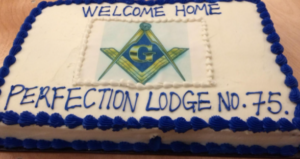
Westminster Freemasons Hall
“A people’s memory is history, a people without a history can grow neither wiser nor better”
– Isaac Leyb Peretz 1852 – 1915A
A short history of Freemasonry in New Westminster
In 1860, the California Gold Rush had petered out, civil war was about to break out in the eastern United States, what became the state of Washington was still a territory and the British had established two colonies, Vancouver Island and on the mainland, British Columbia. With discoveries of coal and gold, men flocked to the area giving credence to the claim that our original membership was made up by Freemasons from many backgrounds, especially those from Canada, England, Scotland, and the United States.
A meeting to organize a Lodge was held at New Westminster during the winter of 1860, and it was agreed to ask for a Warrant of Constitution from the Grand Master of England. Due in part to the petitioners coming from different countries, the name ultimately selected for the new Lodge was "Union". The “founders” if one were to speak of those at the first recalled organizing meeting were:
Henry Holbrook
Dr. John Vernon Seddall – Royal Engineers
Willam Gilmore Peacock - Clerk to Holbrook
George Frye - of the Customs
Hickey, Constable
Levi, Storekeeper
Boos – Levi’s partner
William Stewart
On December 16, 1861, Union Lodge No. 1201 ER was established, the first Freemason’s Lodge in the Colony of British Columbia. The original meeting “hall” was the upstairs of the Hick Building on Columbia Street – image below, the large building on the left with the upstairs balcony.
Over the course of the next 25 years, many fraternal orders, societies and organizations grew in New Westminster as did the membership of Freemasonry. It was during this time that, the Mason’s, in conjunction with the International Order of Odd Fellows (I.O.O.F.), secured a mortgage and built the first “Masonic” Lodge building in 1888 on what is now the corner of Columbia Street and Lorne Mews. Sadly, fire ravaged the building in 1891 and for a time the Masons met at Leonard’s Hall (no archival photos of this hall have yet to surface) where they had previously laid the cornerstone. The building was restored and in 1892 a second Lodge was created, King Solomon Lodge No. 17. Sadly, New Westminster suffered the Great Fire of 1898 that destroyed much of the downtown corridor, and the building was once again ravaged by flames only to be rebuilt once again.
With a growing commercial interest on Columbia Street, in 1911, Union and King Solomon Lodges moved to their 3rd building location at 508 Agnes Street and enjoyed many years of fellowship and brotherhood.
After more than 100 years in service, a major building project was undertaken to replace the aging 1911 building. The Freemasons Hall you are now standing in front of still has its original brick facade, entrance and front window casings as a testament to its past and it has built within its walls a foundation for its future.
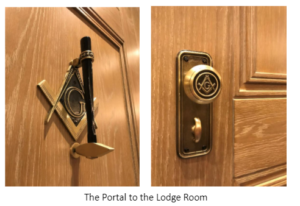
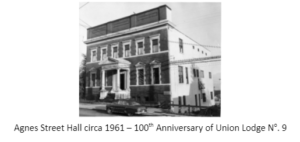
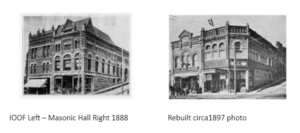
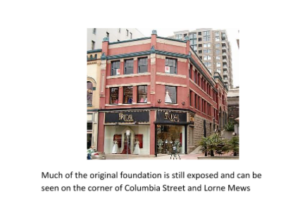
Union Solomon Lodge No. 9

Union Solomon Lodge No. 9 began as Union Lodge No. 1201 ER (English Registry) in 1861, and then, in 1865, due to the renumbering of the English Lodges in 1863 to fill in the gaps that had occurred in the Roll of Lodges there, we became No 899 ER. We know that many of the original Lodge Brethren came from many jurisdictions primarily within Canada, and from England, Scotland, and the United States, which has heavily influenced the ritual as practiced today.
Our initial petition for a warrant to form a Lodge was refused by England as the proposed Junior Warden (one of the top three officer positions of a Llodge) was a Scottish Freemason by the name of Gilmour Peacock, and according to the English Constitution at the time, the first officers were required to be registered on the books of the Grand Lodge of England. Thus, a certain Brother Valentine Hall has the honour of being listed on the original charter of the Lodge as Junior Warden.
In 1871, with only nine Lodges in existence (five Scottish Registry and four English Registry), there was a move to create our current Grand Lodge, that of British Columbia (Yukon was not yet part of the formation). But Union Lodge, having close ties to England, was conspicuously absent from that first initial communication of the Grand Lodge of British Columbia. The Honourable, Worshipful Brother Henry Holbrook (Honourable, as Holbrook was the New Westminster member of the 1st General Assembly of the Parliament of British Columbia), our first Worshipful Master, and at the time, the Deputy District Grand Master ER, fought bitterly against the formation and wrote letters opposing it. There was considerable correspondence on the matter, but all trouble ceased in 1872 when Union Lodge resigned its English Warrant and joined the newly formed Grand Lodge of British Columbia to become Union Lodge No 9.
You might ask "why number 9?", given that Union Lodge was the original Lodge in the Colony of British Columbia. The story goes, that even though we did not join with the original eight Lodges, a renumbering of Lodges was offered so that we could become No 2 after Victoria-Columbia Lodge No. 1 (that being the original Lodge in the Colony of Vancouver Island). The cost would be $150. That was a sizable amount of money in 1872, hence we were very satisfied, thank you, with No 9…and who, honestly, would want to be number 2!
In 1891, with the growth of Freemasonry in New Westminster, the formation of a second Lodge in the city, that of King Solomon Lodge No. 17, was sponsored by Union Lodge. The two Lodges, Mother and Daughter, co-existed in harmony and brotherly love for many years. Sadly, with old traditions having died out with the passing of time, and with a falling membership and financial need, the two lodges merged in 2001. In order to recognize the love and fraternal relationship between the two lodges that had lasted for 110 years, when the membership of the two lodges came together again, the name was changed to Union Solomon Lodge No 9.




